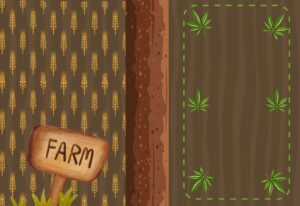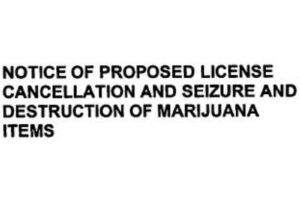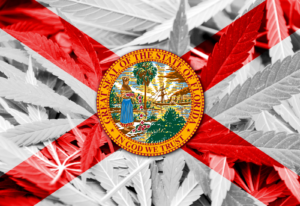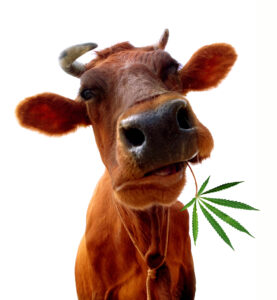
The Medical Cannabis Regulation and Safety Act (“MCRSA”) left us with many questions regarding how cannabis cultivation would be regulated. But now that the California Department of Food and Agriculture (“DFA”), through its CalCannabis Cultivation Licensing division, dropped 58 pages of proposed regulations for the Medical Cannabis Cultivation Program we have plenty of answers. Though these rules are not final, they provide us with the general framework for the forthcoming medical cannabis cultivation (and processing) licensing regime in California.
“Cultivation” means any activity involving planting, growing, harvesting, drying, curing, grading, or trimming of cannabis. And “Processing” means all activities associated with drying, curing, grading, trimming, storing, packaging, and labeling of nonmanufactured cannabis products. The rules define “Nonmanufactured cannabis product[s]” as dried flower, shake, leaf, and pre-rolls intended to be sold for use by medical cannabis patients. Nurseries are also encompassed within the cultivation rules, and are defined as licensees that produce only clones, immature plants, seeds, and other agricultural products used specifically for the planting, propagation, and cultivation of medical cannabis. The rules governing cannabis manufacturing, including extraction and infusion, were developed by the Department of Public Health.
The DFA will offer 14 different cultivation licenses (including the initial application fee – a higher annual license fee will also be required), as follows:
- Specialty Cottage Outdoor ($65) – an outdoor cultivation site with up to 25 mature plants;
- Specialty Cottage Indoor ($100) – an indoor cultivation site with 500 square feet or less of total canopy;
- Specialty Cottage Mixed-Light ($285) – a mixed-light cultivation site with 2,500 square feet or less of total canopy;
- Specialty Outdoor ($130) – an outdoor cultivation site with less than or equal to 5,000 square feet of total canopy, or up to 50 mature plants on noncontiguous plots;
- Specialty Indoor ($1,070) – an indoor cultivation site between 501 and 5,000 square feet of total canopy;
- Specialty Mixed-Light ($555) – an indoor cultivation site between 2,501 and 5,000 square feet of total canopy;
- Small Outdoor ($265) – an outdoor cultivation site between 5,001 and 10,000 square feet of total canopy;
- Small Indoor ($1,935) – an indoor cultivation site between 5,001 and 10,000 square feet of total canopy;
- Small Mixed-Light ($1,105) – a mixed-light cultivation site between 5,001 and 10,000 square feet of total canopy;
- Medium Outdoor ($765) – an outdoor cultivation site between 10,001 square feet and one acre of total canopy;
- Medium Indoor ($4,260) – an indoor cultivation site between 10,001 and 22,000 square feet of total canopy;
- Medium Mixed-Light ($2,435) – a mixed-light cultivation site between 10,001 and 22,000 square feet of total canopy;
- Nursery ($60) – cultivation of cannabis solely as a nursery; and
- Processor ($310) – a cultivation site that conducts only trimming, drying, curing, grading or packaging of cannabis and nonmanufactured cannabis products.
The basic background and corporate information required for the cultivation license application will be nearly identical to the information required of applications for manufacturing, retail, distribution and transportation licenses. Once the application becomes available in early 2018, applicants will need to submit required background information on all owners. An “owner” is the CEO or any person or entity within a publicly traded company that has, in aggregate, greater than a 5% ownership interest and, for all other business entity applicants, “owner” means any individual who has, in aggregate, greater than a 20% ownership interest (excluding the ownership of a security interest in, lien on, or any other encumbrance of the business entity applicant). And if there’s a business that has an ownership stake of greater than 20% in the entity applying to the state, its CEO and all directors are considered owners. Finally, an individual is considered an owner if he or she participates in directing, controlling, or managing the applicant. This includes “discretionary powers” to, among other things, direct and/or control the hiring and firing of personnel, contracting for the sale of goods on behalf of the applicant, and making policy decisions on behalf of the applicant.
As with the other license types, if an owner is married, their spouse does not need to go through the rigorous background check process or get fingerprinted, so long as he or she is not an Owner of the applicant, as defined above, although the spouse must nevertheless be disclosed to the state.
Applicant owners will need to provide the state with a detailed description of any criminal convictions, excepting juvenile adjudications and traffic infractions. Cultivation license applicants must also provide a statement of rehabilitation for each conviction. This statement must be written by the owner and contain all evidence the application would like the DFA to consider that demonstrates the owner’s fitness for licensure. Such evidence may include a certificate of rehabilitation under Section 4852.01 of the Penal Code, or dated letters of reference from employers, instructors, or professional counselors that contain valid contact information for the person providing the reference.
With regard to the cultivation site, applicants must provide evidence that the applicant has the legal right to occupy and use the proposed location. If the applicant is the owner of the location, this evidence should include a copy of the title or deed to the property. If the applicant is not the owner of the property, the applicant shall provide the DFA with the following:
- A document from the property owner that states the applicant has the right to occupy the property and acknowledges that the applicant may use the property for commercial cannabis cultivation;
- Property owner’s mailing address and phone number; and
- Copy of the lease or rental agreement, or other contractual documentation.
All cannabis cultivation sites must be located at least a 600-foot radius from a school, as defined by Section 11362.768 of the Health and Safety Code. Applicants will also need to show they have a valid seller’s permit, or are currently applying for a seller’s permit, have obtained a surety bond in the amount of not less than $5,000, payable to the DFA, have permits issued by the applicable Regional Water Quality Control Board or State Water Resources Control Board (the rules contain very detailed requirements for proving that water for cultivation is properly sourced), and have conducted a hazardous materials record search of the EnviroStor database for the proposed premises, among many other requirements.
Importantly, applicants will also need to show that they are either operating in compliance with, or that their location will comply with, applicable local law, and that the necessary local permits and approvals have been obtained. With local regulations varying widely from city to city, and county to county, it will be critical to get a head start on ensuring local law compliance for your cultivation business.
The details on “priority status” can be found here, and for cultivation businesses that do not meet the requirements for priority status, but were operating prior to January 1, 2018, the state will provide a grace period for operations during the license application status. If a cultivation business was in operation prior to January 1, 2018, it may continue to operate while its application is pending if a completed application is submitted to the DFA no later than 5:00 pm PST on July 2, 2018, and the continued operations of the applicant are the same activities in which the applicant is seeking licensure. If the license application is denied, the applicant must cease operating until a license is obtained.
The DFA will not restrict the total number of cultivation licenses a person is authorized to hold, so long as that person’s total licensed canopy does not exceed 4 acres. Unless a person has a Producing Dispensary license, that person shall be limited to one Medium Outdoor, or one Medium Indoor, or one Medium Mixed-Light license. Additionally, the rules state that multiple cultivation licenses and license types may be located on the same property, but each licensed premises must have a unique entrance and immovable physical barriers between each uniquely license premises.
We’ll be delving more deeply into the additional requirements for cannabis cultivation licenses in the coming weeks, including operational and site requirements. And we’ll also be breaking down the rules for cannabis transportation, distribution and retailers in a forthcoming post.
Stay tuned.























